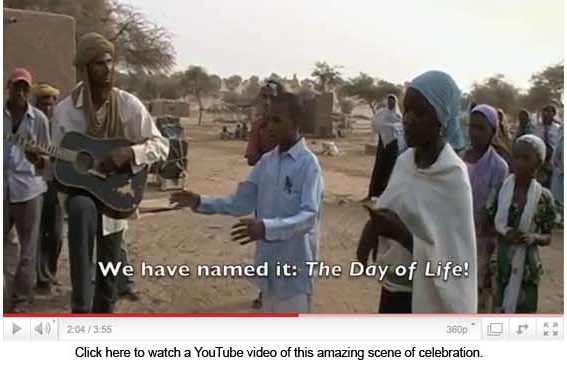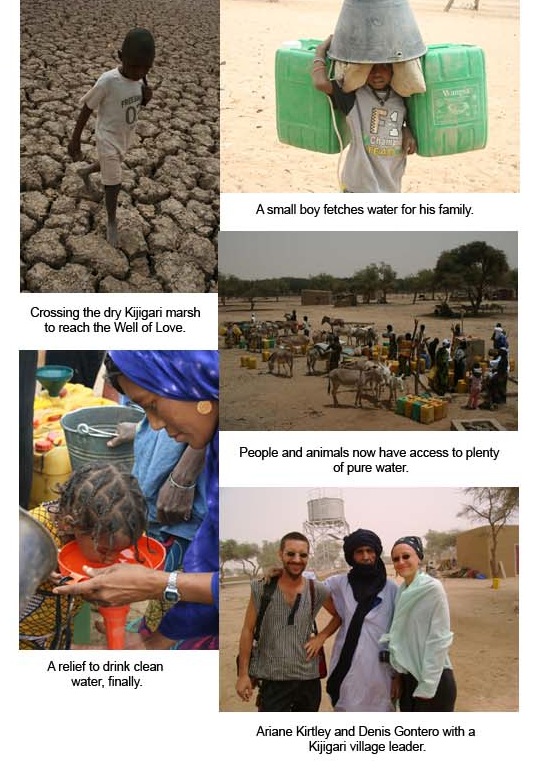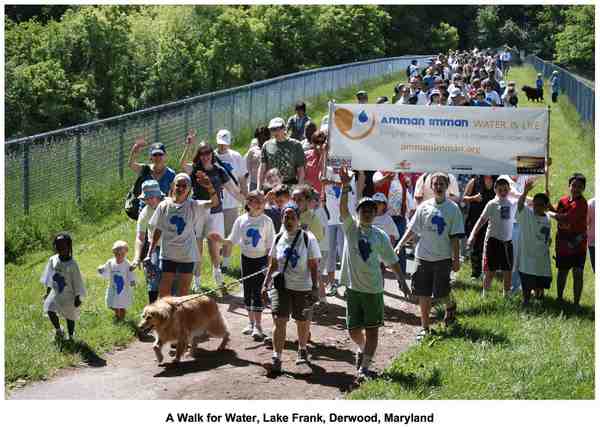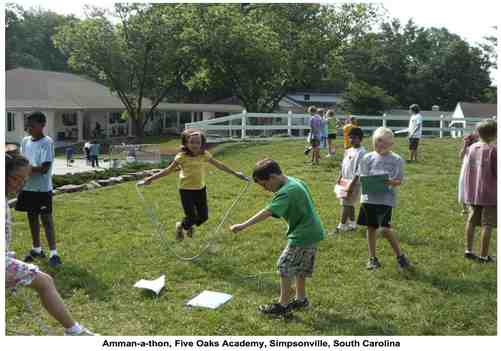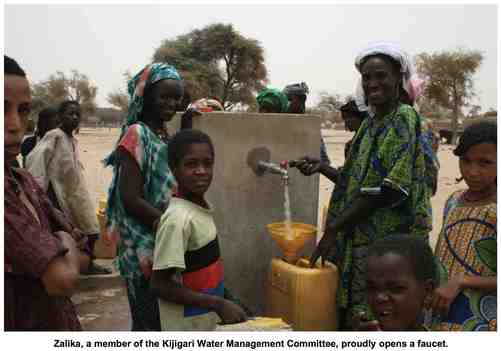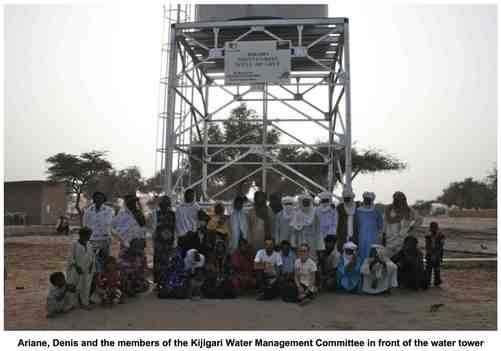
Please contribute to Kijigari's community empowerment by supporting Amman Imman's life-giving work in the Azawak! Here's what you can do:
|
Many people have asked me how long a borehole can last. This answer is entirely dependent on how well the borehole is managed. In fact, establishing the proper stewardship and management of the borehole over the long run is arguably one the most challenging and rewarding components of our work. It is also one of our top priorities.
Depending on how well a borehole is managed, it can last anywhere from a century or more, to just a couple of years. To help ascertain the longevity of the Kijigari borehole, Amman Imman helped establish a Water Resource Management Committee (WRMC) of responsible and trained Kijigari citizens. These individuals were elected democratically by the villagers, but were first chosen based on established criteria.
Electing Committee Members
Denis (our Niger Program Director), Moumine (our Operations Coordinator in Niger), and Abdoulkarim of the Department of Hydraulics first held a meeting where all the men and women of Kijigari were invited to participate. During this meeting, they outlined the characteristics and criteria for each management committee member. The most important was the trustworthiness of all, and that the officers had to have literacy training. They also insisted on the active involvement of women.
In Kijigari, our task was simplified thanks to the fact that villagers are already well organized and accustomed to managing things in their village. The women have been managing their garden cooperative, grain banks and sewing cooperative for years. The men have great experience managing the school, market and business cooperatives. Many of the adults have already received literacy training and have a basic understanding for writing and counting.
After this initial meeting, all the villagers gathered for several nights in a row to reach a consensus about who they would choose as committee members. Kijigari is divided into 7 quarters. While choosing the members of the committee, village leaders made sure that at least two individuals were represented from each quarter in order to promote equal representation and avoid jealousy.
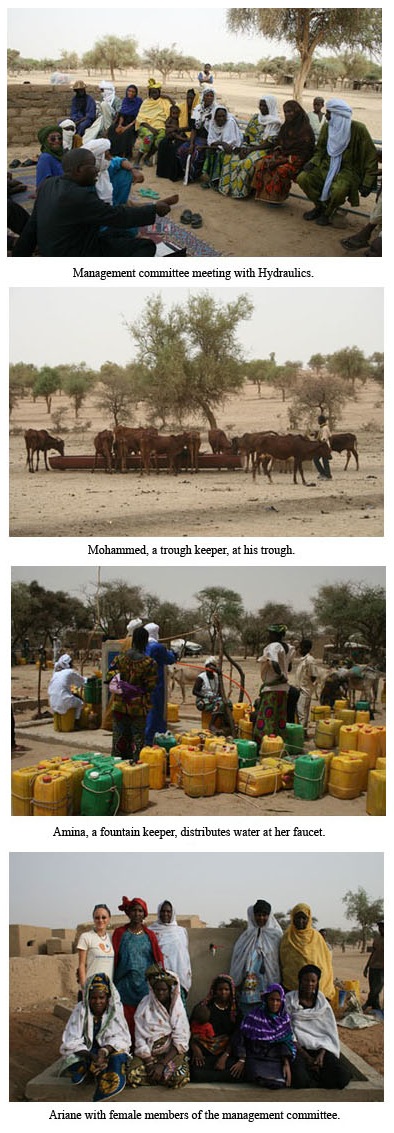 |
The management committee is composed of the following members:
- President – Adam, the former school director, was chosen for this role. He has long been respected as a wise village elder. Even before he was elected, he had a vision how to use the money raised by the borehole wisely. The money could be divided into three different banks, so to speak. One bank would be used to properly manage, take care, improve and repair the Kijigari borehole; the second would be used for developing and improving the village; and the third would be used to one day help pay the construction of a borehole in another village. We hope that his dream becomes reality!
- Secretary – Ibrahim, the man elected for this position, will take notes during committee meetings, and will represent the president when he cannot be present at a meeting
- Treasurer – Halima, the woman elected for this position, would be responsible for gathering the funds raised during the day every night, counting and keeping track of the money, and taking it to the bank in Tahoua once a month.
- Fountain “Keepers” – These are the eight women in charge of the four water fountains. They serve the water and collect the money from water fetchers. They also keep the fountains clean.
- Trough “Keepers” – These are the four men responsible for selling the water at the troughs. They count the animals, and sell the water according to the number of animals. Both the trough and fountain keepers take their collection of money to the treasurer at the end of each day, after having first made a report to the president.
- The mechanics – Two men were chosen to run the engine, conduct its regular maintenance; and ascertain that there is a continual flow of water in the water tower.
- Watchdogs – There are eight watchdogs – three of which are women – that are not active members of the committee, but serve to make sure the committee functions properly. They make certain that the funds are being managed properly and also serve as liaison between committee members and the population.
Once the committee members were elected, they took part in a series of training sessions. Additional training sessions will be held throughout the year.
Our local team, with the participation of the Department of Hydraulics, conducted two days of intensive training for the officers. This training session focused primarily on proper financial management and record keeping. Our local team then stayed an additional three weeks to follow up with this initial training session, and perform direct training with the fountain and trough “keepers”, also in financial management, and also in hygiene and sanitation. The mechanics underwent two months of intensive mechanical training with a specialist from the borehole construction company, in order to understand the basics of maintenance and mechanics.
Our local team continues to conduct follow-up training and visits twice a month, and Abdoulkarim from the Department of Hydraulics, will conduct visits every one and a half months. These visits will not only serve to do additional training, but will also help evaluate the efficacy of the WRMC, and help advise changes if deemed necessary.
Successful WRMC So Far
In the little time that the borehole has been operational, activities have been going well. The committee has raised over $1,000 through selling water to villagers and visitors from other camps and villages. After the first month, the committee voted to pay the fountain and trough keepers, as well as the mechanics. They work all day under the beating sun, and deserved some compensation. 10% of the money raised through selling water is distributed equally between the committee workers as pay.
The watchdogs conducted a two-day study to test the functioning of the committee. They sat with the trough and fountain keepers, and observed how money was collected. They examined the accounts, to make sure that money had not been misused. And they conducted interviews with the populations to analyze their appreciation of the borehole. They shared the issues that water fetchers had brought up, in order to find solutions and improve how things have been run so far.
Our local team and Abdoulkarim have already conducted additional training, and have already helped make some changes to improve the operations of the WRMC.
We don’t expect things to run perfectly this year. However, the WRMC as well as the villagers are highly motivated to take care of their borehole. They dream that their Well of Love will provide life giving water for generations to come.
Stay tuned next week to learn about our Heroes of Compassion and how they helped build the Kijigari Montessori Well of Love.
Yours for the Azawak,
Ariane


